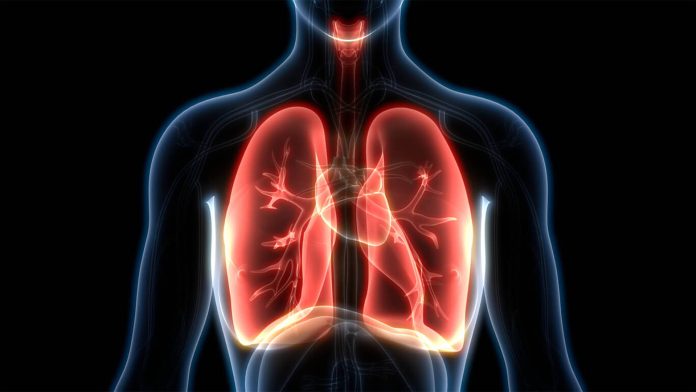Is the changing weather seems harsh on your throat?
Do you have to switch to nebulizers and inhalers with the onset of winters?
Are N95 masks an essential commodity for stepping out?
Seasons seem to bring a drastic change in our lives as if compelling us to change along with them. Cold, cough, and flu make us bog down, making it difficult to stay agile.
Our unique body constitution keeps reminding us to follow the balancing act as it has to cope with a multitude of challenges stress, seasonal change, pollutants that lead to imbalances of doshas manifesting in the form of illnesses. These minor illnesses if left unattended, can give rise to chronic and comorbid conditions. The uninterrupted flow of prana – life force is essential for our holistic being and quality of life. Let’s break this vicious circle of seasonal ailments and switch to natural solutions available for our rescue.
Renowned yoga experts & ayurvedic practitioners are here with wholesome remedies to manage and overcome cold, cough & flu with the weather change. Dr N Ganesh Rao (Yoga & Pranayama Expert), Dr Rajat Sharma (Ayurvedic doctor), Tapasya Mundhra (Lifestyle expert & Nutritionist) enlighten us about respiratory health
Dr N Ganesh Rao
Founder – ACT Yoga, Mumbai, is a remarkable yoga icon. He is a Doctorate in Philosophy, Diploma in Naturopathy, Diploma in Yoga Education, Diploma in Management Studies, and Specialist Instructor in First Aid and Home Nursing. A seasoned and adept yoga mentor who holds several prestigious positions in several nationally and internationally renowned organizations.
Dr Ganesh Rao emphasizes the relevance of Pranayama to strengthen lung capacity and build immunity.
Pranayama according to Dr Ganesh Rao
“Hathapradipika, a well-known Hatha Yoga Text, says that Pranayama practice is the answer to all ailments. This is because Pranayama practice influences the prana or the life force in the body which is responsible for health and longevity per se. Breathing being directly connected to the state of the mind, Pranayama practice is the best antidote to stress and consequent psychosomatic ailments.You cannot overemphasize the significance of Pranayama practices in the current scenario.”
Question 1 – Which Pranayama can keep cold, cough & flu at bay?
Dr. Rao – Prolonged and sustained breathing practices help directly in strengthening the respiratory system. Ailments (like sinusitis, cough, phlegm, etc) associated with the system are therefore prevented or minimized. Though all breathing practices help in the above, the following practices may be singled out in connection with cold, cough, and flu:
- Right Nostril breathing
- Nadi Shodhana Kriya (alternate nostril breathing without retention)
- Kapalbhati (rapid forceful exhalation)
- Bhastrika Kapalbhati (rapid and forceful inhalation and exhalation)
Question 2 – How effective is the meditation to stay strong and build our immunity?
Dr. Rao – Physical and physiological immunity are to a great extent dependent upon the state and quality of mind. A mind which is easily disturbed and stressed out will definitely lead to low immunity and vice versa.
Meditation practice, incorporated into a day-to-day lifestyle, helps in establishing the equanimity (samatvam) of mind and increasing the level of awareness. Both these factors enable to increase the threshold of bearing stress. It’s a sustainable solution for keeping stress and mental disturbance away.
Question 3 – What kind of pranayama relieve symptoms of flu like running nose or painful throat?
Dr. Rao – Yogic practices, generally being preventive in nature, are better avoided when a person is suffering from an ailment. When the nose is running or the throat is very sore and painful, one must avoid any specific practice. Wait for these symptoms to fade away and then do the breathing practices to ensure that these problems don’t arise in the future.
Dr. Rajat Sharma
Renowned consultant and doctor at Maharishi Ayurveda Hospital and Ayurvedic Center for Chronic Diseases is an expert in treating chronic health diseases and believes in holistic diagnosis as well as treatment of a patient. Dr. Rajat has profound wisdom in Naturopathy, Nutrition, Yoga Therapy, Panchkarma, and Medical Astrology acquired from Dabur Dhanwantry Hospital and specialized in Panchkarma from the National Academy of Ayurveda. Dr. Rajat unearths the significance of medicinal herbs in healing respiratory issues.
Question 4 – Do Vrittis and seasonal change affect respiratory disorders? How herbs can help in mitigating their ill effects?
Dr. Rajat – Ayurveda’s purpose is to create a body and mind which can fight all kinds of health challenges presented in any era. Certainly, diseases too modify with changing times. As per Charaka Samhita, disease occurs due to the amalgamation of Dosha (bio-energies) and Dhatus (tissues) and the impartation of vitiated qualities of Doshas over Dhatus. Therefore the body’s immune system plays a vital role in resisting diseases.
Bij (seeds) soaked in Bhoomi (land) germinates under ideal conditions. Similarly, the ideal condition for vitiated Doshas (micro-organism that vitiates Doshas) to affect Dhatus is the depleted immunity of Dhatus (Dhatu Bala). In order to mitigate their ill effects we first need to know how disease occurs in our body:
Anna Vaha Strotas
A healthy digestive system is key to balanced Immunity. Nutrients needed to build immunity that comes from the digestive system. Ayurveda says good digestive fire means healthy tissue level agni or metabolism. It is like, on lighting one lamp, all other interconnected lamps lit up. It is important to keep the digestive system channels (Strotas) clean and running. An imbalanced digestive system creates toxins known as Ama.
Advertisement
Rasa Vaha Strotas
Rasa vaha strotas carry these nutrients to the body, e.g. respiratory system. An imbalanced digestive system creates Ama+ some rasa (the nutrients). These get circulated through big arteries. When circulated ama accumulates in weak or microsites in the respiratory system and wears down the respiratory system by weakening those sites. These weak microsites serve as home to viral and bacterial attacks.
Prana Vaha Strotas
Prana (essential life force ) + vahan- the flow of life happens in prana vaha strotas. Its main sites are the head and organs like lungs etc. Dirt, pollen, cold humid air, bacteria, and viruses can enter through these channels and take over the body through replication. This sends the body in a tizzy, basically over-reacting state. Also, gas exchange in the lungs is affected thereby obstructing the circulation of oxygen (prana). It results in a runny nose, sneezing, headache, mild fever. When they travel deeper into weak micro ama afflicted sites in the respiratory system, the ama combines with excess Kapha (created due to respiratory system attack), this sticks to the inner lining of the respiratory system causing cough, and respiratory complications like heavy breathing and flu
कुपितानां हि दोषाणां शरीरे परिधावताम् |
यत्र सङ्गः खवैगुण्याद्व्याधिस्तत्रोपजायते [१] ||१०|| Su.Samhita
The following herbs are known to be effective against microorganisms (Jantughana) act against the possible causes of flu and prevent their occurrence-
- Tulsi (Ocimum sanctum) the incredible tulna rahit is known for its Antiviral, Immunomodulator properties
- Kali Mirch (Piper nigrum)
- Pippali (Piper longum)
- Chirayata (Swertia chirata)
Question 5 – What are commonly accessible herbs to get relief from conditions of cough and flu?
Dr. Rajat – These herbs help in relieving the symptoms of cough and flu and prevent their reoccurrence
Herbs for Respiratory issues
- Kali Mirch (Piper Nigrum)
- Tulsi (Ocimum sanctum)
- Haldi (Curcuma longa)
- Vasa (Adhatoda vasica)
- Pippali (Piper longum)
- Sonth (Zingiber officinale)
- Kachur (Curcuma zedoaria)
- Badi Elaichi (Amomum subulatum)
Herbs proving relief in fever- (Antipyretics -Vishamajawara )
- Tulsi (balances “Rasa” the first Tissue affected during Fever-Antipyretic )
- Giloy (Tinospora cordifolia)
- Haldi (Curcuma longa)
- Kachur (Curcuma zedoaria)
- Kalmegh (Andrographis paniculata)
- Kantakari Chhoti (Solanum xanthocarpum)
- Lahsun (Allium sativum)
- Badi Elaichi (Amomum subulatum)
Tapasya Mundhra
An adept wellness coach with expertise in acupressure and acupuncture. She has profound wisdom and experience of modern-day health issues owing to professional constraints and an unhealthy lifestyle. Tapasya has enabled the vast majority of people to adopt a healthy lifestyle with the right nutrition and diet apart from achieving relief from stress and an unhealthy lifestyle. Her consistent efforts and contributions have made her the face of many renowned magazines and health shows in print and electronic media. Moreover, she is generating awareness among youth about a healthy diet as an eminent lecturer at ACE.
Question 6 – How can we combat respiratory diseases through diet?
Tapasya – Diet definitely makes a difference if you are facing respiratory problems. You can increase the consumption of antioxidants and fruits and vegetables loaded with Vitamin C. Fruits and vegetables are beneficial in respiratory conditions due to their nutrient profile consisting of antioxidants, vitamins, and minerals.
- Citrus fruits such as oranges, Amla
- Antioxidant food like pomegranate, beetroot
- Green colored vegetables like spinach, methi, yellow and red bell peppers
- Green chili is also a source of Vitamin C
- Fish and walnuts- great sources of omega-3 supplementation can be added to the diet
- Garlic and turmeric are anti-inflammatory and reduce infection in the lungs and respiratory system
- Avoid mucus forming food such as dairy products
- Avoid the consumption of refrigerated foods.
Question 7 – What is the essence of diet in seasonal changes?
Tapasya – Diet should be altered according to seasonal variations in order to stay healthy.
In summers you require more liquid intake like buttermilk, coconut water, vegetable, and fruit juices to keep your electrolyte in balance. During winters, try consuming dense food that keep you warm through the season. Crave for rich, fatty, and heavy food like stuffed paratha and ghee, and have bajra roti, soups, and ginger to stay warm.
Spring and autumn are also important as you get allergies and feel lethargic. Usually, you see a lack of appetite in such seasons, so go for light food and consume smaller quantities but frequently to maintain energy levels.



